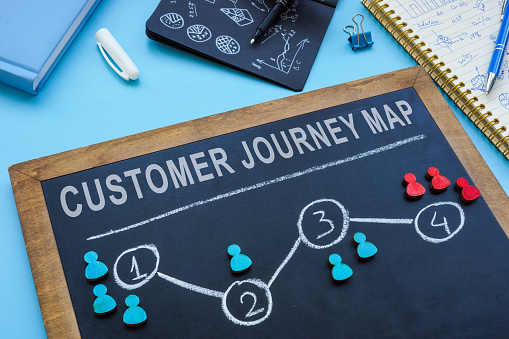Many people see sales as the ultimate goal or result of customer engagement, but that is only the start. To ensure your customers continue to patronize your brands, the aim of marketing should go beyond making sales. As a business owner, you have to know how to measure yours by using relevant metrics.
The best indicators go beyond sales; they also cover keeping your customers, getting positive feedback/testimonials, and customer referrals.
So, what are the best metrics to measure customer engagement? We will discuss all that here in this article but let’s discuss briefly what does it mean.
What is Customer Engagement?
It refers to results from the performance of a marketing campaign, and it also involves the efficiency of reaching and inducing a reaction from the target audience. As a result, you should be able to boost sales and increase revenue. However, going beyond that can be better for your business.
Customer engagement also involves creating a relationship and strong bond with customers, and that is because satisfied customers can lead to effective feedback and referrals. Feedbacks from customers are vital as it could also help improve the services or products of your brand.
How to Measure It?

Just like every business vertical, customer engagement must have a goal. Brands should ask themselves questions such as; what are we aiming to achieve? What are the goals? This would help you define the progress of your campaign.
Businesses should track activities such as likes, shares, and comments to measure their engagement on social media. Marketers using websites and blogs can measure engagement using average session duration, bounce rate, and other metrics.
Also, feedback and reviews are other metrics that business owners can use. Companies that leverage email marketing can also use software to track the behaviors of their recipients.
The Best 10 Indicators To Measure Customer Engagement
If you want to discover the efficiency of your customer engagement strategy, some metrics can find it. Below are key indicators that you should know:
1. Conversion Rate
Every campaign has a goal, which determines the conversion rate. The aim of any marketing campaign could be to get customers to download an eBook, subscribe to a newsletter, click a web page, or visit a product page and buy a product.
Whatever the target of the promotion is, you have to pay attention to the conversion rate as this would also reveal your return on investment (ROI). So, how can you measure the conversion rate?
Some businesses use tools and software that provide accurate numbers on their conversions. However, we will show you another way with just simple math;
Conversion rate = Number of conversions X Multiply by 100
Total number of visitors
For example, you have a campaign that aims at getting people to download an eBook. If you got 100 visitors on the page and 20 people went on to buy the eBook, this is how to calculate the conversion rate;
Conversion rate= 20/100 X Multiply by 100
= 20%; conversion rate
2. The Net Promoter Score (NPS)

The NPS is another effective metric that shows your customer engagement. It usually prompts customers to rate their experience after using a particular product or service. You can use NPS to measure the general experience of your customer and use it to improve services.
NPS most times comes in the form of feedback questions such as this;
On a scale of 0 to 10, how do you rate your customer experience with our company’s product/services?
How likely are you to recommend our product/services to your friends
How can we improve our services/products?
With this metric, you can know the customer experience and the quality of services they receive. It can also help you improve the quality of your output if possible.
3. Average Session Duration
The ‘session duration’ refers to the average time a visitor spends on a site pages per session. Marketers can leverage this metric to discover which products customers are interested in, especially a landing page.
Blog posts with a higher average session duration show that they appeal to your target audience, and that helps you to create content on similar topics.
Tools like Google Analytics can help you track the average duration session of your posts. They also have information about your audience’s location and other demographics.
4. Return Users Frequency
Another way to effectively show how your customers engage is the number of return users. Returning visitors indicate an interest in your content/product/services.
A high number of returning visitors would be a good result for your business or campaigns. Google analytics tool can also reveal this information.
5. Customer Retention Rate (CRR)
The conversion of prospects into buyers is not the landmark of a marketing campaign, and you have to make sure that the customers that purchase a product do not switch to your competitors. The customer retention rate is the ability of a business to turn one-off buyers into repeat customers.
CRR measures the number of customers a business retains for a given period. Customer retention is another way business owners can apply to measure customer engagement.
So, here is how the math works;
CRR = [(E – N) divide by S] multiplied by 100
E- is the number of total customers at a given period
N- is the number of the added customer at a given period
S- the number of existing customers at the start of the given period.
If you want to know more about it, check out this article about retention metrics.
6. Customer Churn Rate
The churn rate refers to the number of customers who stopped using your product over a period of time. A big part of your customer engagement strategy results are calculated annually or quarterly. Companies can use the churn rate to know why their customers are leaving.
Although businesses look to reduce the churn rate to a minimum, the presence of this metric might not be a big worry. Having one-off customers in a business is normal, but tracking your churn rate and keeping it minimal is still crucial.
Online business can use customer feedback survey responses to gauge the consumer’s reactions and opinions towards the brand, platform, and its product. This will help to form a better understanding of the marketing strategies that needs to be employed to increase customer loyalty.
7. Social Media Engagement
Social media now rules the digital world today. So, it is essential to take note of your campaign on social platforms such as Facebook, Instagram, LinkedIn, and Twitter. Social media platform users can engage with your pages if they like your brand.

You can use tools to measure social media interactions of your customers with your brand’s page. Social shares and positive comments can create brand awareness and increase your social media reach.
8. Customer Satisfaction Ratings by Channels
Making customers satisfied should be the priority of every business. However, you have to find a suitable medium to ask customers about their experience. In app surveys work wonders in gathering customer feedbacks. Firstly, survey to discover the channels your customers prefer to communicate with your brand. Then, use the channel to ask them about their experience with your product/services.
9. Ticket Volume By Support Channel
The ticket volume is another customer engagement metric that business owners should follow. It highlights what channels customers in different situations when dealing with your services uses. For instance, some customers prefer social media for asking questions and Emails for other issues. Some customers might also like to use chatbots for some situations.
10. Customer Lifetime Value
Having repeat and loyal customers is excellent, but it does not end there. You have to assess the value of your long-term customers, and that is what this metric brings.
Already, you know how much your repeat customer spends with your company monthly or quarterly. You can use this information to predict how much customers can spend on your business through the partnership.
Customer lifetime value can be vital in determining the budget for customer acquisition cost and the user engagement metrics that needs to be employed to get more active users.
Conclusion
While there’s no one-size-fits-all approach to measuring customer engagement, you can take a few key steps to track your efforts – the points made in this article will help you get a leg up on it.
It may seem a little complicated initially, but with a few practical steps, you can easily measure it. A streamlined action plan can help improve customer satisfaction and engagement, leading to better ROI.
So, consumer engagement is vital to every business, whether startup or established. Metrics are essential in measuring the progress of your company. If you have any more questions on this topic, please check out the Frequently Asked Questions and Answers Section Below.
FAQs
Why is customer engagement important?
Customer engagement strategies are essential to the growth of any business. It is also a key performance indicator for your brands. Here are a few reasons why they are important.
Customer Relationship: Most customers do not want to read sales copies that scream ‘BUY.’ That means businesses do not have to rely only on promotional strategies. You have to create a connection to your brand and build trust with prospects. It will not just help you make sales but also make the customers return for more.
Getting Referrals: Most customers buy products on the recommendation of friends and families. So, giving your customers a good experience will make it more likely for them to refer others to your business. It is as simple as that!!
Creating a Valuable Brand: Big businesses today do not make it with numbers on sales or revenue. Valuable brands and companies are built on the idea of providing solutions to a customer’s needs. As a business owner, building your business by solving customers’ problems with your services will be helpful in the long term.
Is consumer engagement a KPI?
Yes, customer engagement is one of the most crucial key performance indicators that every business owner should consider. The indicators you can use to measure it have been discussed above in this article.




